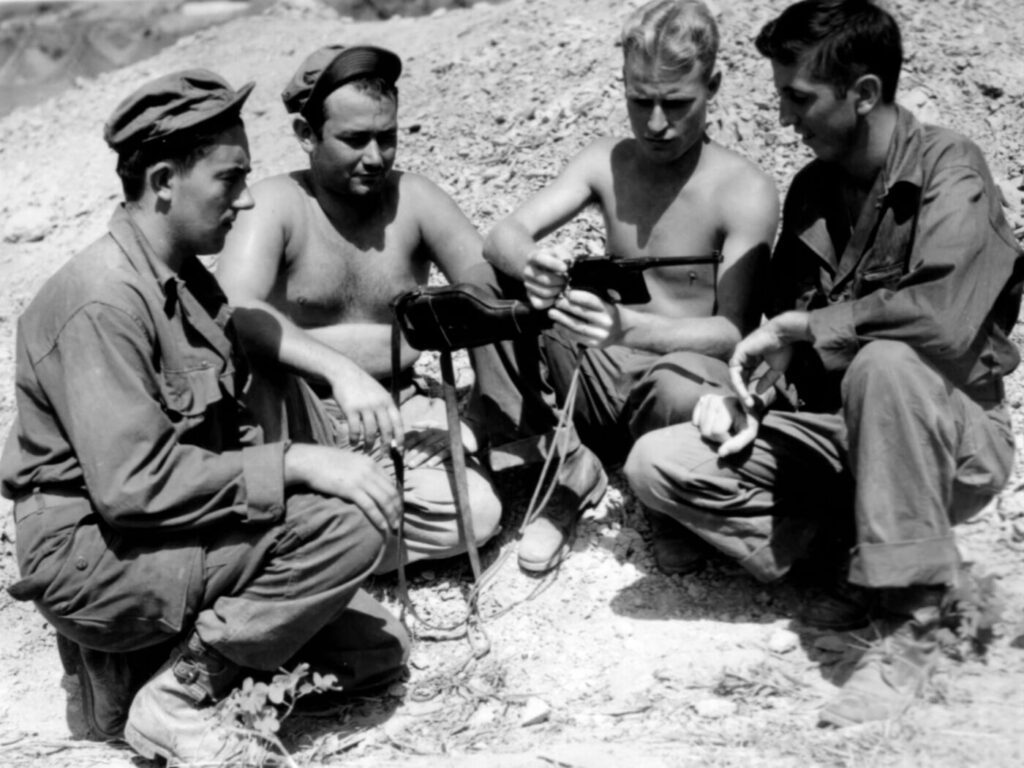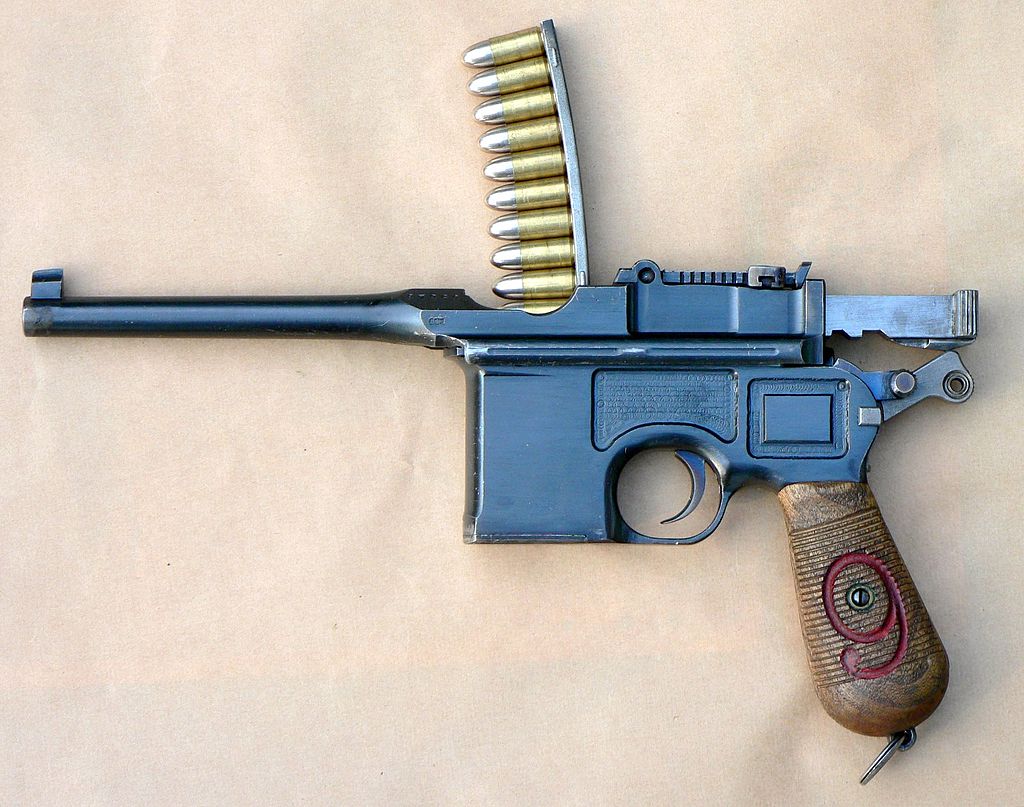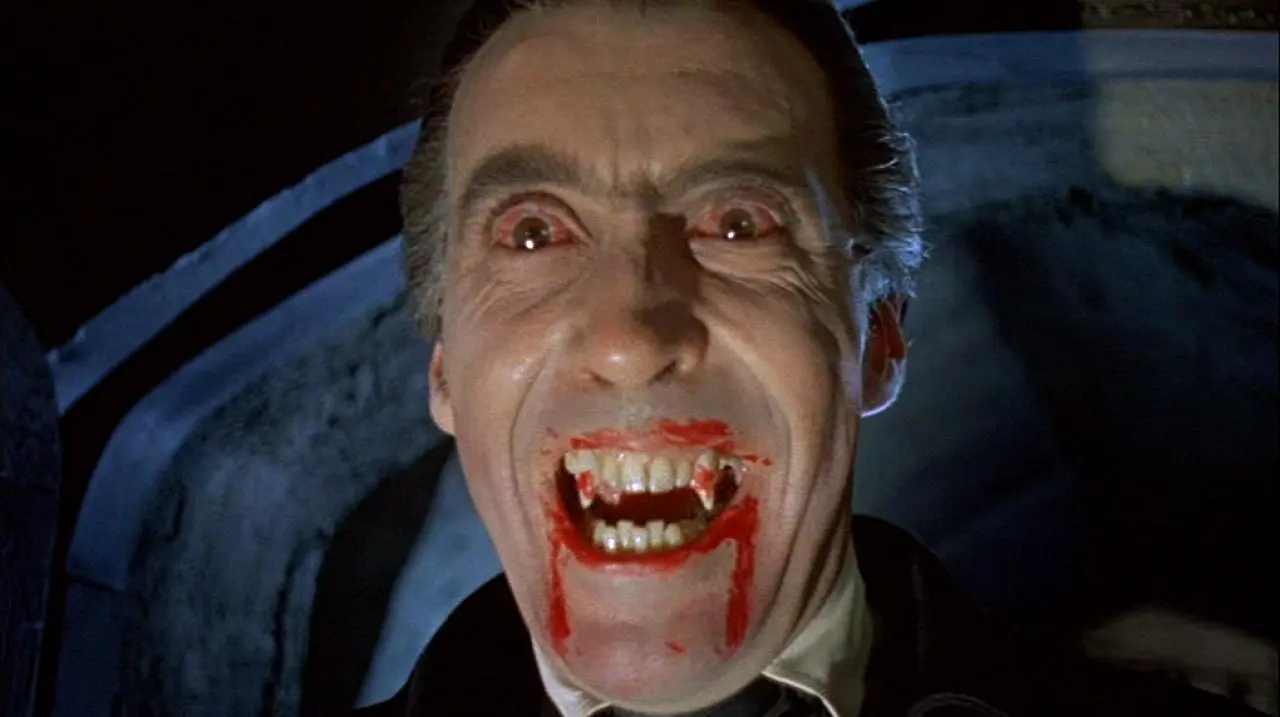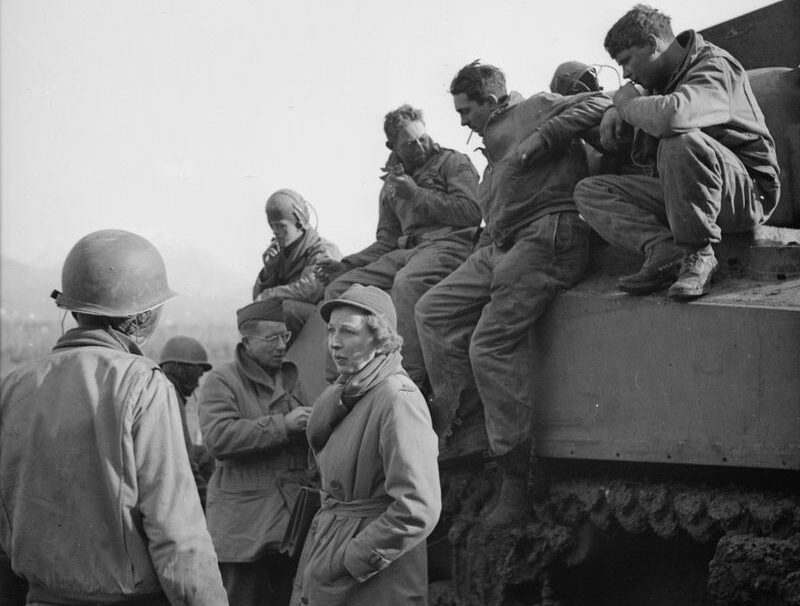If ever a weapon looked like it shouldn’t work, it has to be the strange looking Mauser C96 ‘Broom Handle’ pistol.
At first glance, it looks clumsy, top heavy, and a cumbersome beast to say the least. Not the sort of pistol you’d think was a product of the mighty engineering brains of Germany in the late 1800s. So, did it work, and more importantly how did it hold up during combat?
The C96 pistol was made by the tried and tested German arms manufacturer Mauser. It was in production from 1896 to 1937 and ran pretty much in parallel with the Luger that was manufactured between 1898 to 1949.
One of the most obvious things that you notice on the C96 is the integral box magazine which is in front of the trigger and not in the handle like later pistols. Another is the very distinct wooden, rounded grip handle. This grip led the pistol to become known as the Broom Handle due to its resemblance to the most mundane of household implements.

Read More: Luger from WW2 Handed into the Police
Although the pistol looked a little strange, it fired a high velocity round that far outstripped any pistol of the day. The 7.63 x25mm cartridge had a better range and a far superior penetration than most of its close competitors. In fact, it fired the highest-velocity pistol cartridge until the dawn of the .357 Magnum, which wasn’t until the 1930s.
The pistol was truly a semi-automatic. And over 1 million were produced. Its standard issue magazine clips were either ten or six rounds. However, there were also 20-round and 40-round detachable box magazines. This, however, caused problems with reliability. That said this was mainly due to the ammunition feed, and not the pistol itself.
As the Mauser C96 was actually manufactured before World War I, it was sold globally, and thus had a large and loyal following. Somewhat surprisingly it was extremely popular with many British Army officers of the time.
Lovers of the C96
Winston Churchill was often seen carrying one during his time in South Africa during the Boer War. In fact, he was so fond of the pistol he actually privately purchased three from John Rigby Co. Gun dealers back in London.
His admiration for the Mauser was immense, and he preferred it to his sword in close combat, once writing:
Read More: The Deadly ‘Iron Harvest’ Still Threatens European Farmers
“Before we wheeled and began to gallop the officers had been marching with drawn swords. On account of my shoulder, I had always decided that if I were involved in hand-to-hand fighting I must use a pistol and not a sword. I had practiced carefully with [the Mauser] during our march and journey up the river. This then was the weapon with which I was determined to fight with. I had first of all to return my sword to its scabbard, which is not the easiest thing to do at a gallop. I had then to draw my pistol from its wooden holster and bring it to full cock…”

The wooden holster was another distinct design of the C96 as this also doubled up as a shoulder stock that could be fitted to the pistol, thus turning it into a true carbine.
Another famous carrier of this reliable pistol was T.E. Lawrence also known as Lawrence of Arabia. The fact that Lawrence carried this pistol in the sandy, dusty climates of the desert just shows how reliable and trusted this pistol was. Jams were few and far between and the pistol was accurate and had immense stopping power. Though Lawrence seemed to carry quite an arsenal with him (He once shot his own camel in the head with a Colt 1911, by mistake!) he seemed to prefer the C96 due to its easy loading capabilities whilst riding.
It was clear that this pistol had appeal. Many countries followed the pattern of the C96 and made, under licenses or with slight variants, their own version of it such as the Turks, the Italians, and of course, the Chinese. All held the Mauser in high esteem.
Soldiers, Assassins and Gangsters
Infamously, it was a C96 that killed Alexander I, The King of Yugoslavia in 1934. Also, a Mauser C96 killed the Spanish Prime Minister, Edward Dato in the early 1920s. The pistol was also carried by numerous gangsters. In fact one such London gangster, Peter Piaktow became so synonymous with carrying the pistol that it earned the nickname ‘Peter the Painter’ after his choice of carrying it and the shape of the pistol’s handle that resembled a paint brush handle. It would appear that the pistol’s reliability was not lost on assassins or murderers.

The Broomhandle C96 has been made in a variety of calibres including .45 calibre and 9 mm Parabellum round. In fact, during WWI the German Army ordered over 140,000 of the C96 Mauser. They asked Mauser to manufacture the pistol in the 9m Parabellum round however to match the Luger and aid in logistics.
Read More: WWII Ammunition Dump Explodes in Berlin’s Grunewald Forest
Because the C96 had already entered service in the Army via private purchases the new variant of the C96 had to have a large number 9 carved into the wooden grip and then painted in bright red. The nickname then became the “Red 9’’ (This was solely done to inform the pistols’ operator not to incorrectly load them with 7.63 mm ammunition by mistake and cause a somewhat serious accident to firer and all around!.)
Who, What and Where?
The pistol has seen action in many conflicts from the Boer War in South Africa, World War I, the Chinese Civil War, and even as late as World War II. Some police forces were indeed carrying the pistol into the late 1970s.
The Brazilian government had in fact ordered hundreds of the C96 variants back in the 1930s and then had them revamped in the 1970s for use by the Federal District Military Police. The new reworked pistols were converted to fully auto machine pistols and sources say they were as reliable as ever! ‘’If it isn’t broke, don’t fix it’’ seemed the motto there.
The pistol has seen many modifications in different countries, such as Austria, Spain, and France, each putting its own stamp upon the original variant. Sometimes as mentioned before this was the pistol’s calibre or sometimes the barrel length or ammunition feed. That said, never has the design strayed too far from that of the original though. Even with the unlicensed models!

An iconic pistol for an iconic time. It is a very popular gun with the collector. It is still sold and shot by gun enthusiasts today, so much so that in the 1980s and into the 1990s, the Federal Ordnance firearms company of South El Monte, California manufactured a licensed copy of the Mauser 1917 trench carbine and Mauser C96 pistol. This gave shooters a new experience on the range in the historical shooting market that’s still popular worldwide to this day.
A Pistol out of this World

Of an interesting footnote, it’s worth mentioning just how, and why, this pistol is so recognisable to many of us. Well for one it’s been the pistol ‘pin up’ for many a Communist Russian or Chinese propaganda poster. An officer leading his troops holding aloft a variant of the C96 was quite a popular choice of poster design.
Also, to those old enough to remember, it was often seen in the baddie’s hand of many a James Bond film. Particularly the SMERSH officers, again a Communist group always trying to thwart 007.
As for out of world experiences, Buck Rogers carried a ray gun based on the C96, but probably the most famous of space users was one Han Solo.
A Mauser C96 was used as the prop to form Han Solo’s blaster in the Star Wars film franchise. Its official Star Wars name was Blas-Tech DL-44 Heavy Blaster Pistol, or so I am reliably informed. Flattery is everywhere for the C96. And here lies a problem. In the 1990s and 2000s when Comic Cons started to increase in size and Cosplay began to grow the C96 started to disappear from the gun market. But why? Well, the answer is a simple one.
The blaster became so popular that Star Wars fans were buying them up and cutting up and welding rare original Mausers to make the Han Solo replica. This didn’t go down too well in the gun collectors’ market but, what was anyone to do?
I mean you pay your money you take your pick, right?






